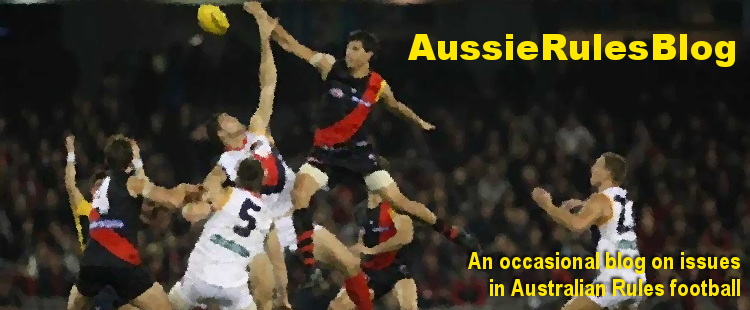This game just keeps throwing up scenarios, doesn’t it? This week, we’ll all be talking and writing about Barry Hall, and so we should. But let’s also add the names of Tayte Pears, Nick Riewoldt and Matthew Lloyd (with apologies to others not listed).
What do all these players have in common? Simple, they’ve all been unfairly monstered by opponents in pursuit of advantage.
Hall, as everyone on the planet must now know, was kneed while tying a boot lace.
Pears, returning a broken hand/arm, was punched on said limb by Jack Riewoldt.
Nick Riewoldt, having injured a shoulder during a game against Brisbane, was crashed into by Mal Michael.
Matthew Lloyd, like Pears returning from a hand injury, had Steven Kretiuk attempting to punch said hand.
AussieRulesBlog acknowledges that we spiritually inhabit a bygone (some would say fictional) era of chivalric sportsmanship. We have previously railed against the modern practice of banging and crashing opponents before the opening bounce.
The spirit of the game we love is embodied in David Hille turning back to check on the seriously injured Jamie Charman after seconds before competing very strongly against him. It is a matter of great regret to us that Hille has, three times in this season, handed out late hits on opponents. These incidents have done him no credit whatsoever.
We don’t have an issue with aggression on the football field, but where it is not directed essentially at the ball, the spirit of our game suffers, and the essence of a fair go, enshrined in the laws of the game, is diminished.
It is an oft-spoken tenet of our game that everyone who runs out for the game is 100% fit. We at AussieRulesBlog agree wholeheartedly with this tenet as long as the contest is only for the ball. Premeditated attacks on players designed to take advantage of some weakness are to be deplored and the players engaging in such attacks are the vilest of creatures.
Winning at all costs is a false idol.



